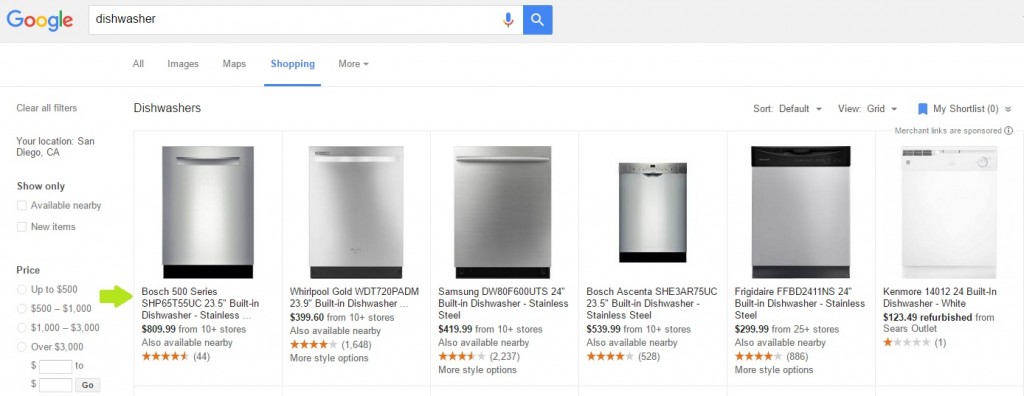Targeting Search Terms with Google Shopping Campaigns

If retailers don’t want their products to show up for unqualified searches, there are now several opportunities for them to “compete smarter” and leverage advanced search term targeting techniques.
Part 1: Google Shopping Whitelists
Part 2: ISO Campaigns™
Part 3: Programmatic ISO Campaigns™
For those who don’t already know, a Search network campaign is targeted by keyword(s). Unfortunately, this capability is not available for Google Shopping advertisers.
 “For example, if someone searches for a “Dell Latitude 2100 Netbook” and you sell that product on your website – you can build out your keyword strategy to capture traffic because Search campaigns are targeted with keywords,” Lewis Brannon, Retail Search Manager at CPC Strategy said.
“For example, if someone searches for a “Dell Latitude 2100 Netbook” and you sell that product on your website – you can build out your keyword strategy to capture traffic because Search campaigns are targeted with keywords,” Lewis Brannon, Retail Search Manager at CPC Strategy said.
“But, Google Shopping works differently from Search. Shopping Campaigns are targeted by your product feed.”
“Advertisers send their data feed to the Google Merchant Center and Google decides how to target certain searches to your products.”
Google has a pretty good understanding of what product and commercial-related queries are. It leverages this to serve relevant, but “appropriately diverse” mix of product ads to users and increases probability that at least one of the products served resonates with the user.
Unfortunately, Google Shopping can lead to mismatched products being served in the Shopping ad box on the SERP, which can potentially hurt a retailer’s ROI.
It can also serve a seemingly random array of ‘related’ products which might not be your best converters, which can cost retailers valuable impression space and potentially hurt the overall return.
“Normally, Google will reference the data feed and find all the items that match with that search and serve those as ads, but advertisers have limited control over which queries are triggering those ads,” Brannon said.
“Google has established a campaign structure and bidding environment that does tend to create the necessity to bid up on certain items if you want ensure you get visibility on them. This often leads to conventional thinking – which is to bid high.”
Although there is no such thing as an “exact match” in Google Shopping campaigns, there is a way to simulate this strategy through whitelists, ISO Campaigns™ and Programmatic ISO Campaigns™ – which we will discuss in more detail in each blog post for this series.
 The goal of Google Shopping Search Term Targeting is to close the gap between a shopper’s search query and the product ad result.
The goal of Google Shopping Search Term Targeting is to close the gap between a shopper’s search query and the product ad result.
For example a search for “dishwasher” will feature companies like CMA, Bosch, GE, Whirlpool, etc.
“We call these generic searches “top-of-the-funnel” since they are likely just starting their shopping process and haven’t yet narrowed their search to any particular brand, collection or product,” David Weichel, Paid Search Director at CPC Strategy said.
“You can convert on these very generic queries, but retailers don’t have control over what’s showing up. There are some brands that won’t convert well for a generic search such as this.”

“Even if you break out a single brand (ex: Bosch) into it’s own campaign, all that means is that the products being served within that campaign are Bosch products. That doesn’t stop the brand from showing up for other searches (ex: white kitchen appliances).”
Google will still show your Shopping ads are the very top of the SERP, which means retailers are bidding $1 to show their Bosch refrigerator for a search that is absurdly generic and doesn’t have a good chance of converting.
That’s the pain of not having Exact Match shopping campaigns.
If you are not one of the more recognizable big box retailers (think the “Macy’s” of the world) then it’s likely your products will get pushed out by high bids. These large brand retailers have the advertising dollars to spend to show up for popular searches.
The only way other mid-level brands and retailers can show up, at a profitable rate, is via longtail searches.
By elevating your marketing strategy and funneling out negative search terms – mid-level companies can capitalize on the searches they are most likely to convert on and avoid wasting ad dollars on generic searches.
For more information on Google Shopping Search Term Targeting, email [email protected].
